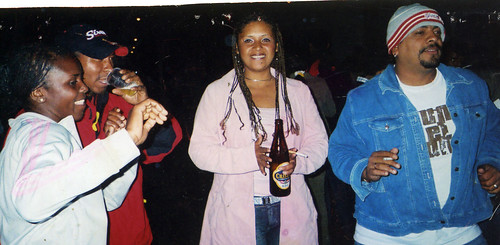Perú: ¿qué pasó, familia? (what’s up bruh [primarily
used by Afro-Peruvians])?
Venezuela: ¿epa,
primo? = What’s up, cuz (short for cousin)
When I was in Cuba, people in the community taught me some of their slang words, like ¡consorte monina mongo! (it’s all good, bruh!).” Then there was one of my favorite Cuban songs entitled Hay Que Estar Arriba de La Bola, (you have to be on top of everything.
After my Cuban trip, I took it upon myself to go on the Internet and download slang words for each country that I planned to visit. That way, when I hear such words, I’ll understand the true meaning in its context. For example, in my first trip to Perú, there was a woman whom a new friend wanted me to meet, and he described her as toda bacán, (a wonderful person). Were it not for my slang research prior to my trip, he would have been unwittingly talking way over my head.
However, I began to realize something very disappointing. The slang words that are so popular in the barrios (the hood) of class-conscious Latin-America are considered trashy among the well-educated and the economically well-to-do. I remember on the University of Havana campus where I was undergoing Spanish-language intensive training, I greeted a classmate with ¿qué bola (what’s up)? The Spanish teacher approached me wagging her finger in my face admonishing me not to talk like that in her class.
Now, when I travel to a Latin-American country, I realize that I have to use discretion with the words I use in reference to whom I’m addressing. Personally, I love barrio Spanish (hood lingo). I love the culture in the barrios, and as my longtime friend, Juan from Venezuela puts it, “the barrio is where the real culture is.” I agree because the Latin-American music that I enjoy most and that has gained such wide-spread notoriety like son-montuno of Cuba (the mother of salsa music), bachata of the Dominica republic, and landó of Perú were all born in the barrios, and were all at one time considered trashy and low class by those born with silver spoons in their mouths. Today, those genres of music are national treasures.

No comments:
Post a Comment
Anonymous comments will be ignored and deleted.